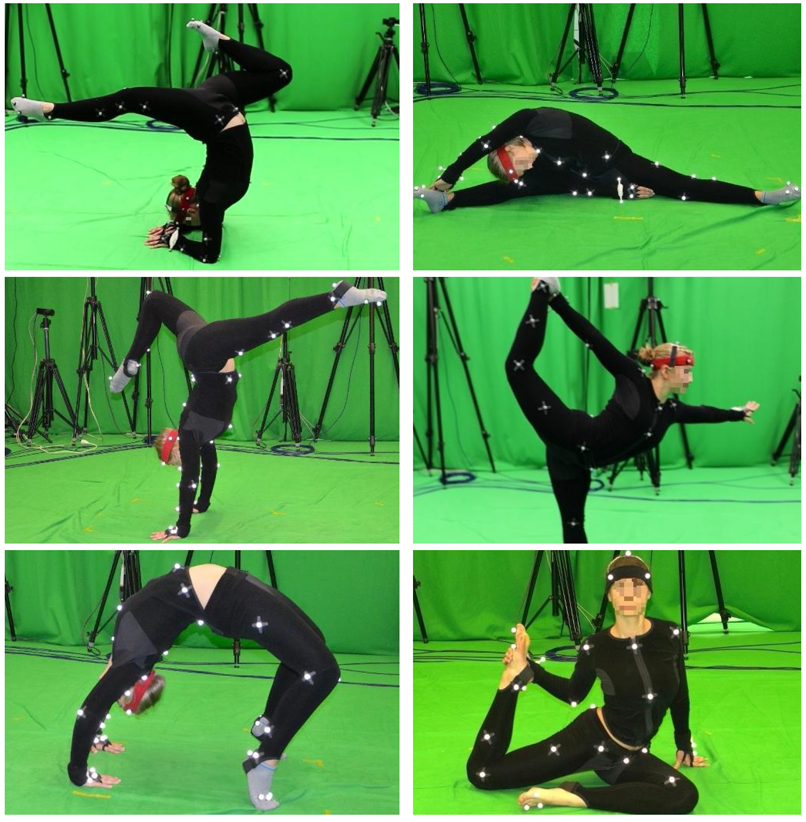The PosePrior Dataset
Pose-Conditioned Joint Angle Limits for 3D Human Pose Reconstruction

Accurate modeling of priors over 3D human pose is fundamental to many problems in computer vision.
Most previous priors are either not general enough for the diverse nature of human poses or not restrictive enough to avoid invalid 3D poses. We propose a physically-motivated prior that only allows anthropometrically valid poses and restricts the ones that are invalid.
One can use joint-angle limits to evaluate whether two connected bones are valid or not. However, it is established in biomechanics that there are dependencies in joint-angle limits between certain pair of bones. For example how much one can flex one’s arm depends on whether it is in front of, or behind, the back. Medical textbooks only provide joint-angle limits in a few positions and the complete configuration of pose-dependent joint-angle limits for the full body is unknown.
Video
Referencing the Model
Here are the Bibtex snippets for citing the PosePrior Dataset in your work.
Main paper:
@inproceedings{Akhter:CVPR:2015,
title = {Pose-Conditioned Joint Angle Limits for {3D} Human Pose Reconstruction},
author = {Akhter, Ijaz and Black, Michael J.},
booktitle = { IEEE Conf. on Computer Vision and Pattern Recognition (CVPR) 2015},
month = jun,
abstract = {The estimation of 3D human pose from 2D joint locations is central to many vision problems involving the analysis
of people in images and video. To address the fact that the problem is inherently ill posed, many methods impose
a prior over human poses. Unfortunately these priors admit invalid poses because they do not model how joint-limits
vary with pose. Here we make two key contributions. First, we collected a motion capture dataset that explores a wide
range of human poses. From this we learn a pose-dependent model of joint limits that forms our prior. The dataset and
the prior will be made publicly available. Second, we define a general parameterization of body pose and a new, multistage, method to estimate 3D pose from 2D joint locations that uses an over-complete dictionary of human poses. Our method shows good generalization while avoiding impossible poses. We quantitatively compare our method with
recent work and show state-of-the-art results on 2D to 3D pose estimation using the CMU mocap dataset. We also
show superior results on manual annotations on real images and automatic part-based detections on the Leeds sports
pose dataset.},
year = {2015}
}